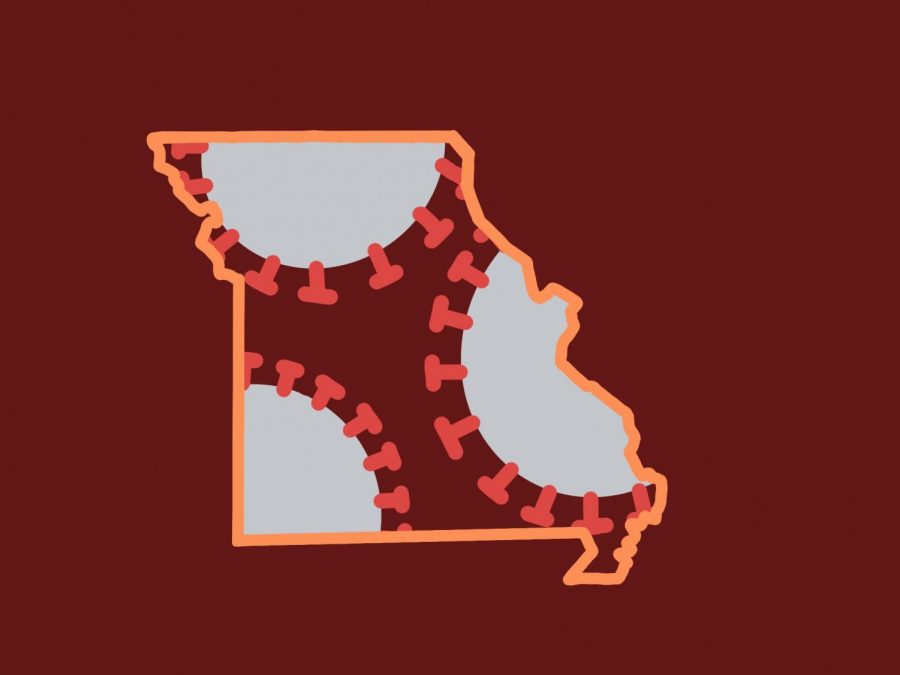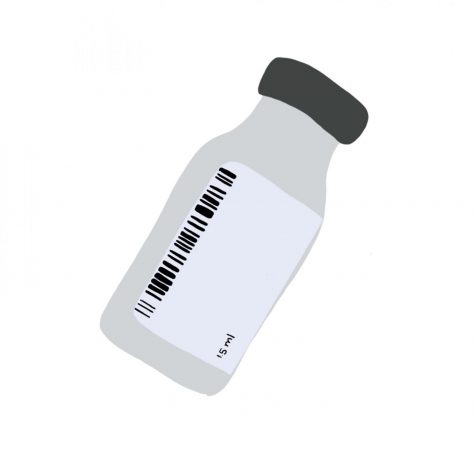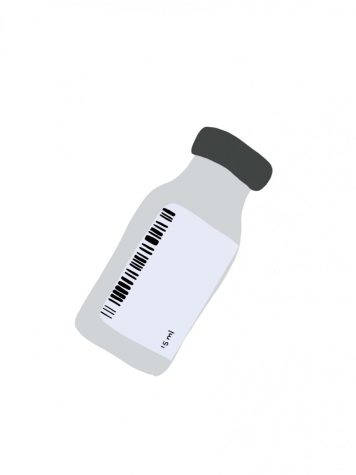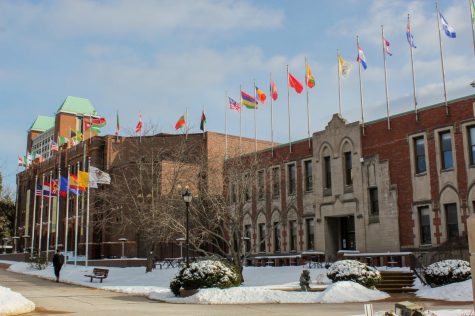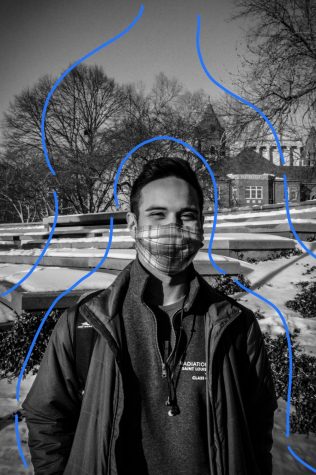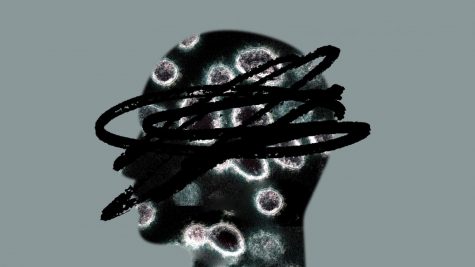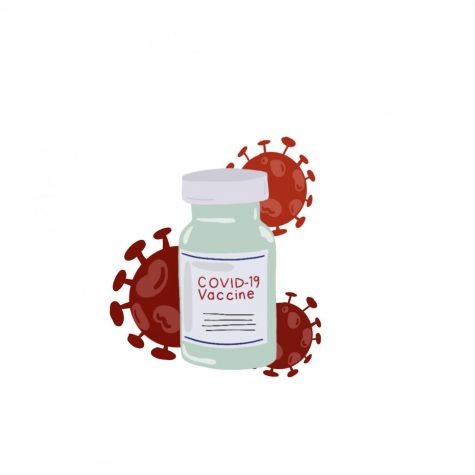Visualizing the Numbers of COVID-19 in Missouri
Editor’s note: This story will be updated as new information becomes available related to the coronavirus COVID-19 in Missouri. The map of Missouri COVID-19 cases and other graphs will be updated as the Missouri Department of Health and Senior Services (MDHHS) announces new COVID-19 cases in the state of Missouri. This story was last updated at 10:00 p.m. on April 16.
COVID-19 has impacted nearly every person on the planet in some manner or another. Each day, the news is bombarded with numbers: 6 feet apart, no more than 10 people at social gatherings, hundreds and thousands of cases and deaths. These numbers may seem hard to conceptualize or even meaningless when looked at alone, but when visualized, they create a trend that only ensures what is being said on the news: we are in unprecedented times. It is everyone’s responsibility to practice the precautions necessary to reduce risk of exposure and to flatten the curve.
As of Thursday, April 16 at 2 p.m., the cases in Missouri have surpassed 5,000. There were 5,111 confirmed cases, 152 deaths and approximately 51,545 patients tested. With 147 of 154 hospitals reporting, Missouri Hospital Association reported that there were 651 total COVID-19 hospital admissions and 392 patients under investigation for COVID-19. MHA also reported 68 percent and 64 percent of adult only and adult/pediatric ventilators available, respectively. The report also newly includes a supply summary which details the number of hospitals with a shortage or a critical shortage of various PPE. Out of the 147 hospitals reporting, 6 have a critical shortage – less than 2 days supply, despite contingency strategies – of N95 particulate respirators, 18 have a critical shortage of surgical gowns and 6 have a critical shortage of testing swabs. For each of the supply inventories, 20-40 hospitals are experiencing shortages in every category.
As of Saturday, April 11 at 2 p.m., the cases in Missouri have passed 4,000. There were 4,420 confirmed cases and 109 deaths; the number of patients tested had not been updated as of 3 p.m. Still only 20 percent of deaths are in patients under the age of 60 and only 0.9 percent under the age of 40. With 120 of 154 hospitals reporting, Missouri Hospital Association reported that there were 506 total COVID-19 hospital cases.
As of Friday, April 10 at 2 p.m., there were 3,799 confirmed COVID-19 cases in Missouri, approximately 42,947 patients tested and 96 deaths. Eight new deaths were reported in St. Louis City. The majority of these deaths are in patients 60 years old and above, with only 15 percent occurring in patients under 60. While new ventilators have been added to the state-wide count, 46% are still available.
On Thursday, April 9 at 2 p.m., MDHHS released the total case count in Missouri to be 3,539 with approximately 40,480 patients tested. 77 deaths were reported, a 32% increase from Wednesday. While Missouri hospitals still have not reached capacity, “Hospital utilization for COVID-19 is growing as well, with an increasing number of admissions among confirmed cases and patients under investigation,” said the April 9 COVID-19 Healthcare Utilization report.
As of April 7 at 2 p.m., 33,820 patients have been tested and 3,037 cases in Missouri were reported by MDHHS. There were 14 new deaths in Clay, Cole, Franklin, Kansas City, St. Charles County, St. Louis County, and St. Louis City counties. Eleven of the 39 Missouri residents who have died were age 80 or older, and 14 were in their 70s. With 114 of 154 hospitals reporting, there were 508 hospital COVID-19 cases. 33% and 35% of Medical Surgical and ICU beds, respectively, were still available. 58% of ventilators were also still available, according to the April 7 COVID-19 Healthcare Utilization report and an additional 72 ventilators were added to the total.
According to Governor Parson, the increase in COVID-19 cases in the state, up 315 from Monday, is a sign of increased screening in Missouri. Parson posted on his FaceBook page:
“Social distancing IS effective at slowing the spread of new infections and we need to remain vigilant
• The rate of new infections has leveled off across the state
• Our hospitals are able to keep up with the needs of the seriously ill
• We now have more people in the recovery phase than new infections
– Dr. Stevan Whitt, Chief Clinical Officer of MU Health Care and Associate Professor of Clinical Medicine, specializing in Critical Care and Infectious Diseases.”
However, the data for the number of recoveries has not been made available to the public.
MDHHS reported 2,722 cases of COVID-19 in Missouri and 39 total deaths on Monday, April 6 at 2 p.m. The new deaths were reported in Callaway, Franklin, St. Louis County and St. Louis City counties. Approximately 31,654 patients had been tested. The COVID-19 Health Care Utilization Report from MHA reported that the number of COVID-19 Hospital cases is much lower than the total number of cases, at 439 hospital admissions with 101 of 154 hospitals reporting. Missouri has not yet reached capacity for bed space or equipment.
The St. Louis Metropolitan Pandemic Task Force held a press briefing on Sunday, April 5. The task force is a collaboration by local hospitals including BJC, Mercy, SSM, and St. Luke’s. “We have every reason to believe the surge is still coming” said Dr. Alex Garza, the head of the task force.
Garza said the peak in numbers is expected to hit in 2 to 3 weeks.
On Friday, April 3, Missouri Governor Mike Parson issued a statewide stay-home order as cases across MO continue to rise. The mandate goes into effect Monday, April 6 until at least April 24. The number of cases on April 5 at 2 p.m. were reported at 2,367 by MDHHA. The total number of COVID-19-related deaths was at 34. MDHHS also reported a rise in the number of patients tested, approximately 29,480.
As of April 3 at 2 p.m., the total number of confirmed cases in Missouri was 2,113 while approximately 24,727 patients were tested. There have been no new deaths since the last update on April 2. MDHHS also published a new feature, the “COVID-19 Health Care Utilization Report.” With 117 of 154 hospitals reporting data, the Missouri Hospital Association (MHA) data showed 475 confirmed COVID-19 Patients as Hospital Admissions with 520 admissions under investigation. The report includes data on the bed and ventilator availability; 31% of Medical-Surgical beds and 30% of ICU beds are open while 60% of ventilators remain available.
As of April 2 at 2 p.m., the total number of COVID-19 cases in Missouri was 1,834, a 19.1% rise since Tuesday, March 31. The death toll was 19, while a total of 21,191 patients have been tested by all labs. While Gov. Mike Parson has not issued a stay-at-home order, St. Louis and Kansas City, as well as other counties, have made this mandate. MDHSS Director Dr. Randall Williams said that the number of cases is likely due to widespread testing, a priority for Missouri health officials.
Visit SLU’s COVID Health Advisory page or the MDHHS website for more information or guidance regarding this outbreak.
Many may characterize COVID-19 as a disease that only affects older people. However, on March 28 the 20-24 age bracket had the second highest number of cases. Now, age brackets between 45 to 69 years have the greatest number of cases.
The majority of COVID-19 deaths are in patients over the age of 60. Only 4.6 percent of deaths are occurring in patients under the age of 50. However, many experts warn that these numbers may be underestimating the actual death toll due to some COVID-19-likely deaths not being reported as COVID-19 positive.
As more national data has shown the increased vulnerability of African-American populations, MDHHS has released the data on race and ethnicity of cases and deaths. On April 16, 28% and 37% of cases were reported in Black or African-American and White populations, respectively. Although 30% of case races are still unknown, this is concerning due to the fact that Black or African-American people make up only 11.6% of the total population in Missouri, according to the 2011 census. The number of race-unknown patients being reported is decreasing. The deaths also show disproportionality, as 40% are from White patients and 34% in Black or African-American patients.
The majority of cases in Missouri are located in St. Louis and Kansas City areas. “Just because the data turns one way or the other does not mean that we need to decrease our social distancing or to stop doing the things that we are doing now…that can decrease the spread: hand-washing, cleaning surfaces, staying 6 feet apart,” said Garza. Looking at these trends, it is clear that the number of cases in Missouri are rising in almost every county.
Your donation will support the student journalists of Saint Louis University. Your contribution will help us cover our annual website hosting costs.



